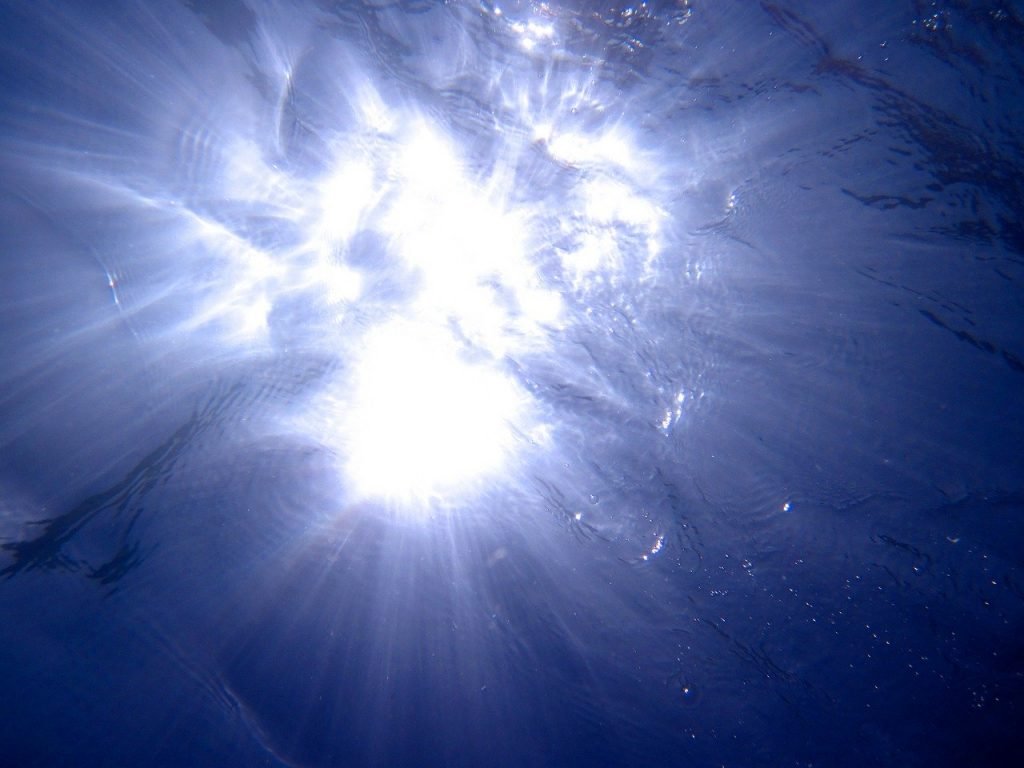Swimming is a fun activity for most everyone, especially during the warmer months of every year. However, when it starts getting to the colder months, most people will start avoiding the water. Unless, of course, the temperature was controlled – like perhaps in a heated pool. However, not everyone or every place can afford a heated pool. And what’s more is that there is no way to heat up a lake, a river, or even the open ocean. So how exactly do you deal in this situation? Do you know how to stay warm in cold water without a wetsuit? After all, the water can get freezing cold sometimes.
Most people would generally just avoid going swimming during the colder months. Personally, I used to do that myself, and often I still do. But it’s not always an avoidable situation – for example, back in the day when I was still in high school and doing swimming as a sport (and as a PE class), I couldn’t pick my time slot. As a result, my swimming sessions were always in the early morning, when the sun hadn’t yet had a chance to warm up the water even a little. Adjusting was always a pain, and my teeth would always chatter as my lips began to turn blue.
However, it wasn’t until later on in life that I really had to learn how to stay warm in cold water without a wetsuit.
Why Not Just Buy/Rent/Bring a Wetsuit?

A valid question that many might ask is – why not just bring a wetsuit? Or rent one… maybe even buy one? This question is completely valid and does make a lot of sense. But the truth is, not everyone has the need for a wetsuit all year round. As a result, wet suits are not always “necessities” to purchase, and isn’t a common thing that a lot of people own. After all, why should you buy something that you would only use maybe once or twice every couple of years? Now, if you do plan to be in the water often, that’s a different story altogether. When that’s the case, we suggest you simply buy a wetsuit!
On the other hand, if it doesn’t make sense to buy one, why don’t you just rent one? This, of course, is another valid question that many may wonder about. The answer to this question can vary. It could be as simple as people not wanting to blow their money on something like it. On the other hand, some people may find themselves spontaneously in a situation where they need to get in cold water but there is nowhere to rent a wetsuit from.
Regardless of the reason why a wetsuit isn’t ideal, learning how to be warm in cold water without wearing a wetsuit is always something that may come in handy. In fact, it could even save your life, or someone else’s, someday.
How to Stay Warm in Cold Water When Not Wearing a Wetsuit
If you are looking to keep yourself warm when you take a dip or a plunge into cool waters, I’ve got your back. I do personally have some experience with this, since I prefer to take my vacations during off peak seasons. This means that when I do make it to the beaches, the water is always at a cooler temperature. Sometimes, I could be the only one in the water because I am the only one that actually wants to brave the cold. It never gets easy, to be honest. Taking a dip in cold water is always a shock that my body takes a while to process and get used to. However, once you accept this, your aversion to the cold will slowly lessen.
Here are some of the ways for you to stay warm.
Use Animal Fat
This particular method is now very understandably growing less and less popular. Back in the 1800s, people who would have to get into cold water made their own “wetsuits” by slathering themselves with some animal fat. They would typically use some goose fat back in the day. These days, most everybody would no longer want to do something as extreme. After all, who would want to slather some goose fat all over every inch of their bodies just to stay warm? Then, of course, comes the whole question of where does one even find goose fat for this purpose?
Furthermore, most people these days would no longer want to use animal products in this manner. Thus, I truly don’t suggest this extreme method anymore. But hey, if you want to try it…
Get Prepped

In almost every single situation in life, preparation is key. There are many different ways in which you can prepare for this situation. Gradually getting yourself used to colder temperatures help, especially if you want to be ready for a cold swim by a particular date. So yes, practicing swimming in cold water is definitely a good way to get your body to a point where you can handle it regularly. Unfortunately, this sort of practice doesn’t exactly make you immune to cold water. Instead, it just gets you more prepared and used to the feeling every time you get in.
This is exactly why mental preparation is also key in this situation. You don’t want to jump into cold water without being ready mentally – you could truly be in for quite the shock. Furthermore, being mentally prepared also allows you to keep your head. As a result, you will have the mental facilities to know what to do in the water.
Additionally, you can also do some physical preparation. For example, you can choose to do some warm up exercises to get your muscles going. You may also find that stretching can help you out. Doing this will allow you to swim more easily once you are in the water.
Get Fully Wet
One thing that I’ve noticed when people go for a dip in cold water is the fact that a lot of them would keep the upper half of their bodies out of the water. This is a bad idea, especially if you really want to be able to quickly get used to the cold. One thing I can give as a piece of advice is when you get in cold water, commit!
Get your whole body wet, including your head and your hair. If only half of your body is wet and the rest remains dry, you will have a harder time regulating your body temperature. You will also experience a rougher time getting acclimated to the cold. As a result, you will end up uncomfortable due to the cold for much longer than is necessary.
And sol the next tike that you find yourself in a cold pool, a cold lake, a cold river, or even a cold ocean… dunk your head in with the rest of you!
Start Moving and Keep Moving
Most people’s first instinct when they get into cold water is to curl up into a ball. However, this is certainly not advisable. Ignore this instinct! Instead, start moving.
You know how exercising gets you all hot, sweaty, and bothered? Well, this is the exact thing that will begin to warm your body up once you are in the water. Therefore, it’s important to force yourself not to curl up into a ball once you’re in the water. Instead, start paddling in place or doing the “doggie swim” of you want to only stay in one spot. If you want a really quick warm up, go ahead and swim a lap or two. Quite honestly, this comes with the added bonus of immediately distracting you from the cold as you are forced to focus on swimming properly.
Some notes: never swim out too far if you are in open water. You may deplete your energy stores and leave yourself with none with which to get back to shore. It’s better to be safe than sorry, so please do not overestimate your capabilities. This is especially important because in this case, it is your life that is put at tremendous risk.
Also, Remember that if you are employing this method to get warm, you will have to keep moving. Reason being that if you stop, the cold will creep right back in – and fast.
What to Do When You are in the Water
Preparation is all well and good, but sometimes when the shock of the cold water hits, all of this flies out the window. Furthermore, you won’t always be able to prepare yourself – sometimes, spontaneous situations arise where you must swim in cold water unexpectedly. So, when this happens, here are a few things that you can also do to help keep you warm:
- Blowing bubbles. This activity is literally one of the very first things anyone learns to do when they start learning how to swim. The shock of cold water may at times take your breath away, and so blowing bubbles can be rather useful in getting your breathing back under control.
- Exhale properly and focus on your breathing. Once you’ve gotten your bearings, ensure that you are focusing on your exhales so that you can breathe more efficiently and properly. This will help with keeping you warm, but also with preventing hyperventilation.
- Never dive into cold water if you have not acclimated to the cold of it first. The initial shock when you dive into cold water can be life threatening. Only get out of the water and jump pr dive in if you have already gotten used to the temperature and swum for a bit in that particular session.
- Having some warm water to dunk yourself in, pour over yourself, or drink is a good idea. Keep some nearby to help you warm up after your swim, or in between sets.
Prepare for the Post-Swim
Being ready to swim in cold water is fantastic. Staying warm in there is even better. But once all is said and done and you’ve finished your swim, it’s important that you’re ready for getting out of the water, too. Here are a few quick tips that could be helpful:
- Keep a thick and fluffy robe nearby for warming up once out of the water. Alternatively, you could also use a thick, large towel, or a big blanket. Some may even suggest one of those shiny silver thermal blankets that search and rescue uses to quickly warm people up. Those aren’t all to comfortable, however, so find an alternative that works for you instead.
- Get indoors. Once you are done with your swim, get inside so you can get warm as soon as possible. Get in your hotel, your cabin, your car, your tent…whichever. Barring that, you can always start a fire to sit by.
- Take a hot shower and get dressed. This is always a great way to cap off a cold swim, but in cases where you are unable to take a shower right away, simply getting dressed can be enough to warm you up fast.
Conclusion
Learning how to stay warm in cold waters without a wet suit is really rather easy. Most anyone can do it, but if you have certain conditions that makes you more susceptible to the cold, please don’t force yourself to do cold swims. Remember to mentally prepare yourself as much as you possibly can. Then, prepare your supplies and your body so that you can safely get in and out of the water. I hope this article helped. Just in case you find yourself without access to a wetsuit! Finally, please don’t actually use animal fat to warm you up… use one of the above methods instead. Good luck!
